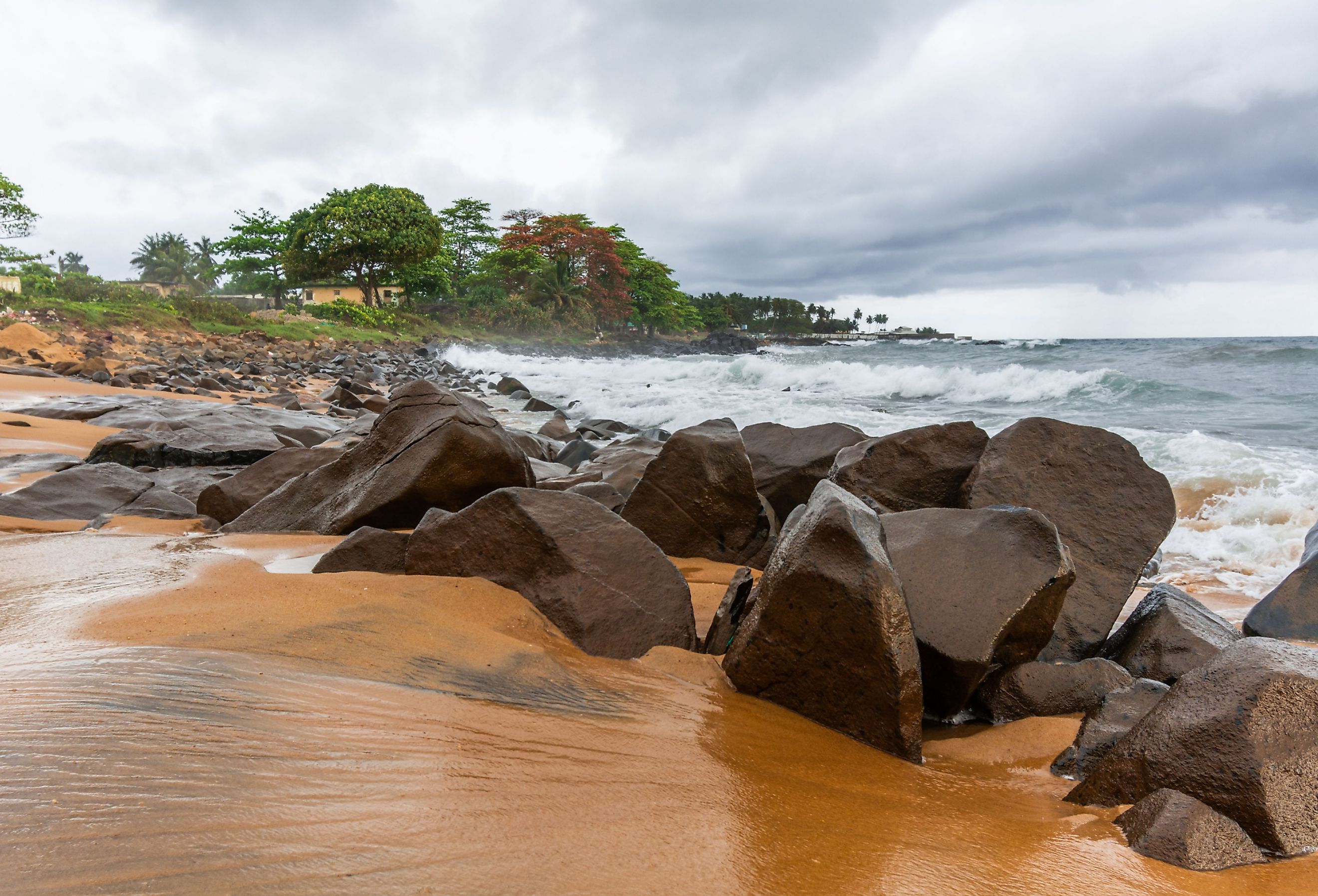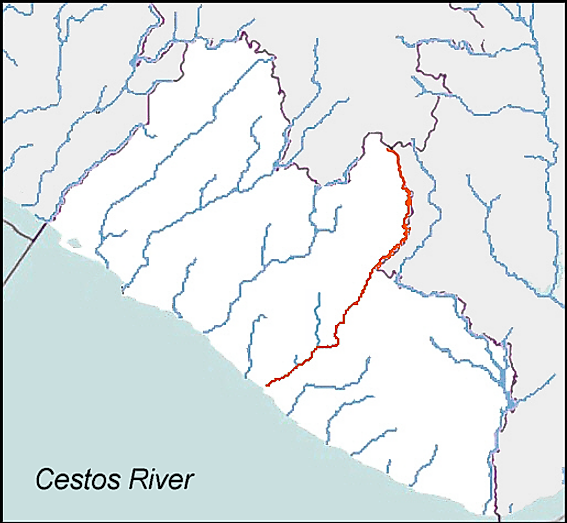
Cestos River
The Cestos River is one of the largest rivers in Liberia. The other major rivers in the country include St. Paul’s, Mano, St. John, Lofa, and Cavalla. Cestos stretches across the southern end of the nation, eventually emptying into the Atlantic Ocean.
Cote d’Ivoire is located to the south, with the river Cestos running along its border. River Cess Town is near where the river empties into the ocean. It is a small coastal city and the capital of Rivercess County.
The Origins of the Cestos River
The Cestos River begins in the Nimba range of Guinea. These highlands are part of the southern parts of Guinea, which is a nation north of Liberia. From these highlands, it flows south past the border of Cote d’Ivoire and down into Liberia.
Despite flowing through Guinea and Liberia, the river only belongs to Liberia. Even though the river does flow partially through these two countries, it flows predominantly within the border of Liberia.
The Cestos River served as an essential shipping system during the First Liberian Civil War. This is especially true for the southern portion of the river, where mining and mineral extraction persisted during the war.
Length of the Cestos River

The Cestos River flows for 476 kilometers (295.7 miles). It is only about 100 kilometers smaller than the Cavalla River, which is the longest river in Liberia. The length stretches most of the border of Cote d’Ivoire and serves as a natural boundary between the two nations. The river is more than 30 feet deep in some areas, making local mining and mineral extraction dangerous. With minimal infrastructure and development along the river, the extraction process sometimes requires divers to swim in the river for the compounds.
Climate
The Cestos River of Cess County is a tropical monsoon region. Heavy rainfalls, storms, and jungle-like environments dominate tropical monsoon climates. This designation sets it apart from the tropical savanna climate, which is a dry, warm climate.
The Cavalla River rests in a tropical savanna climate, where low grasslands are prevalent interspersed by some shrubbery. However, the Cestos River is located predominantly within the highlands of Guinea and the forests of the Cote d’Ivoire border.
Most of Liberia experiences warm, dry weather all year long. However, the area near the coast, near Cess County, is a very wet climate. The region is best known for its rare minerals such as gold, as well as for producing goods like coffee and cacao.
Topography
The area of Cess County is heavily forested. This jungle region is difficult to traverse, mainly because it is not well developed and has few paved roads. However, the area is not very mountainous and is composed of mainly flat land with a lot of plant life.
Following the river along the Cote d’Ivoire border and into the Nimba Guinea Range, visitors can see much more rugged terrain. The Nimba Guinea range has several large mountains, including Mont Sempere, Mont To, and Mount Richard-Molard.
Local Animal Life
Liberia has many forested regions that are home to a diverse supply of plant and animal life. The country is believed to be approximately 30% forest, with much of the forests resting in Cess County.
The pygmy hippopotamus is one of the most popular and unique species living along the Cestos River. The pygmy hippopotamus is very similar to its closest relative, the hippopotamus. However, they are significantly smaller and are predominantly considered nocturnal creatures.
Pygmy hippos are herbivores and far less aggressive than their larger relatives. They spend most of their time in the water to keep their skin from cracking.
The African Gold Cat and Red River Hog are other mammals that spend significant time near and around the Cestos River. The African Gold Cat is a good hunter that hunts small rodents that linger along the banks of the river. The Red River Hog is closely related to the wild boar and hunts for roots and fungi with its large snout.
There are wide varieties of birds that make their home in the forests surrounding the Cestos River. The White-Backed Vulture and Hooded Vultures are two of the largest bird species that hunt and make their homes in the surrounding woods. These birds are primarily scavengers and feed themselves by eating dead animals.
Finally, the Cestos River is home to several fish, amphibian, and reptilian species. Unfortunately, the river has lost significant fish and animal life due to mining operations in the area.
Local Plant Life
The Cestos River is mainly located within a jungle environment. Liberia is home to over 200 types of trees, with many varieties calling the Cestos region their home.
Cess County is known for producing several varieties of vegetation, including coffee, cacao, and rubber. In fact, aside from precious metals, these plants are the main exports of the Cess County region.
The rubber tree is a common species in the area, making Liberia one of the biggest natural rubber producers. Thanks to this natural wonder, the Bridgestone tire company owns several rubber farms and manufacturing plants in Liberia.











